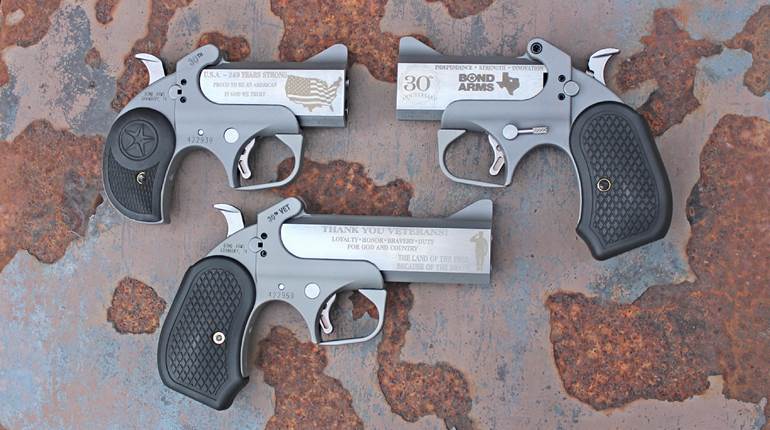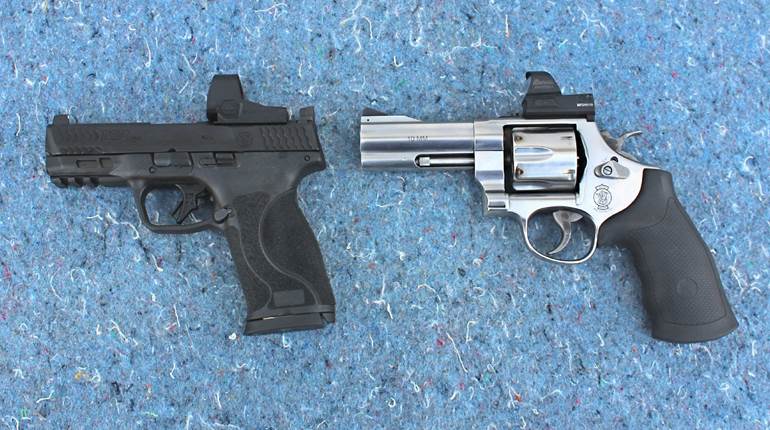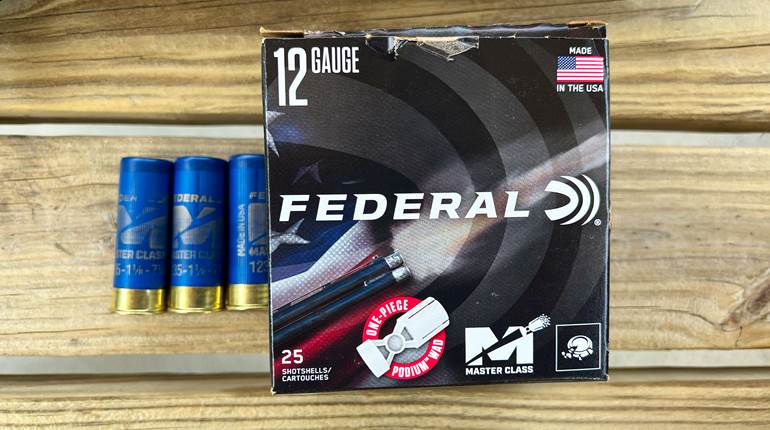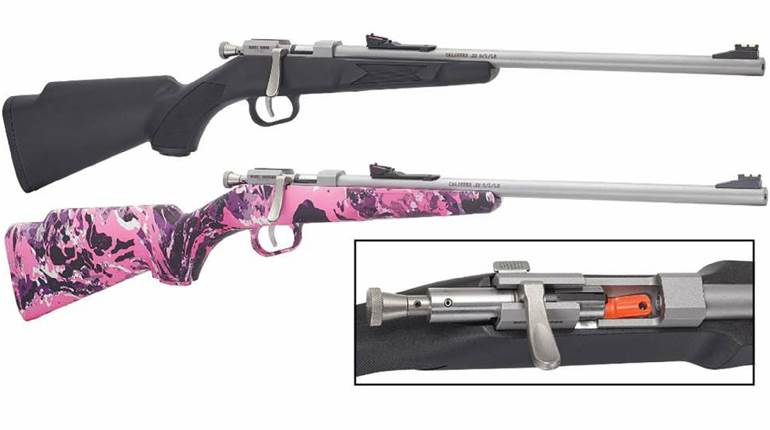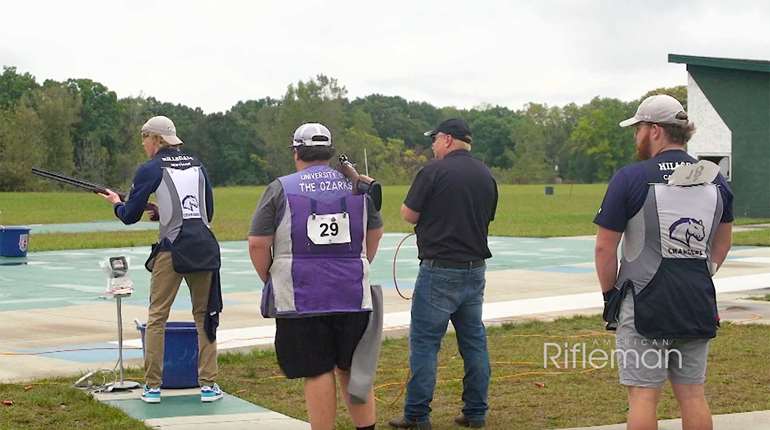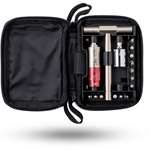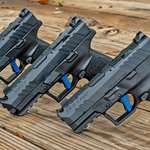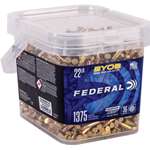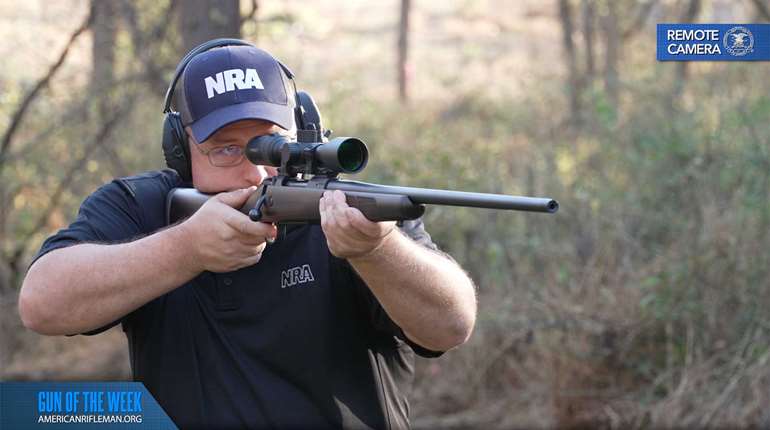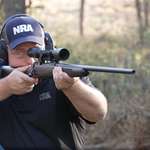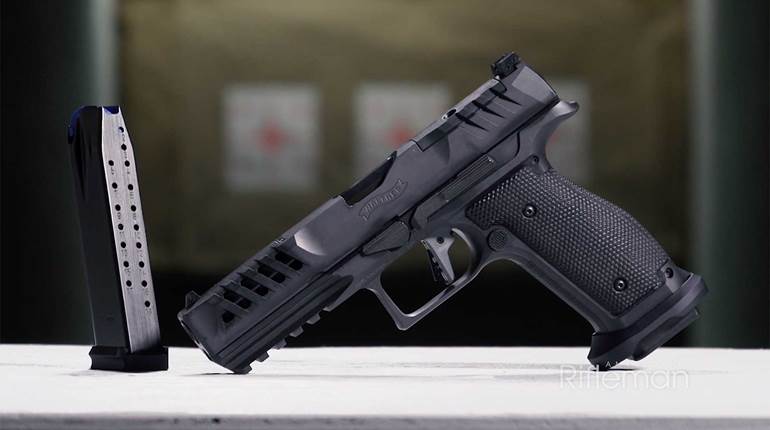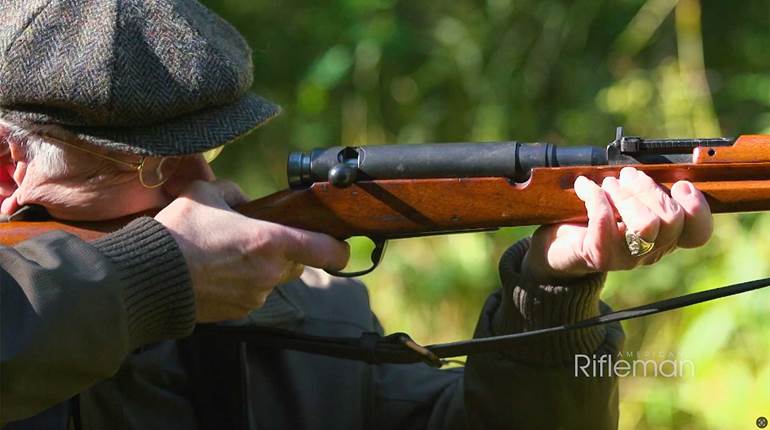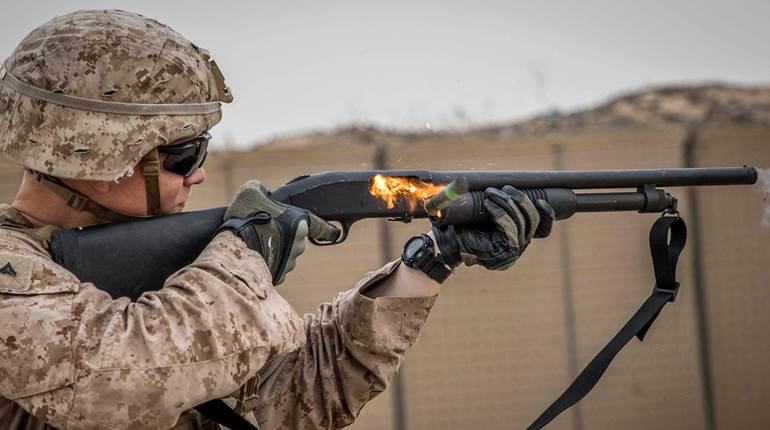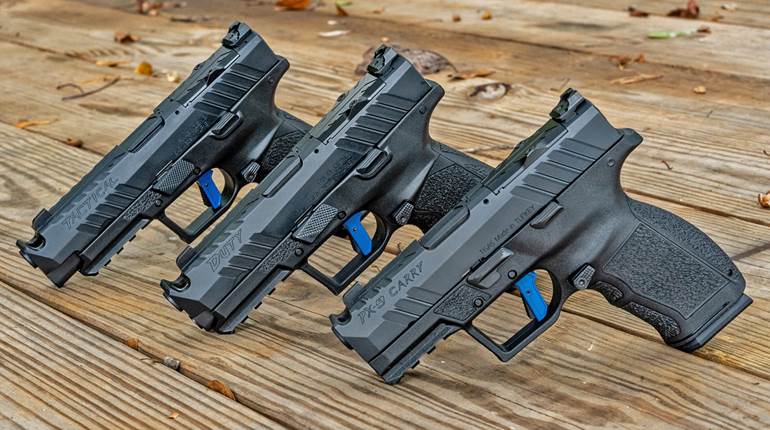
The Glock G17 9 mm Luger pistol is considered by some to represent a milestone for modern combat handgun design. Before the Glock arrived on the market, the idea of using impact-resistant plastic to form a pistol frame was seen as not only impractical, but laughable. It’s been more than 30 years since Austria adopted the Glock for use by its armed forces, and just a little more than 27 years since the pistol began to be imported for sale on the U.S. market. Needless to say, no one is laughing now. Just as the M1911 and CZ-75 have inspired the design features in many other pistols, plenty of gun manufacturers, both large and small, are using the Glock as the inspiration for their own polymer-frame semi-automatic handguns.
Dozens of changes to the Glock platform have been introduced through the years, even though the pistol appears to have remained essentially the same to those who are unfamiliar with it. After all, you can have any color of Glock you want, as long as it’s black. Some changes were developed as functional improvements to the gun, while others fulfilled specific military or law enforcement contract requirements (the recently released G30S in .45 ACP is a good example of a contract-to-market model).
Glock is now offering the fourth generation of its landmark pistol design, and to understand what makes Gen4 pistols different, and in some aspects just the same, as previous versions, it’s helpful to take a look at what came before. Although it’s neither possible nor practical to list all of the various modifications here, a general overview can be derived by looking at the major changes between each of the generations.
From Generation 1 to Generation 3 (1982 - 2009)
The first Glock pistols, including the Standard-size G17 9 mm (1982) and the G18 Select Fire models (1987), were duty-size pistols intended for military applications. The two most notable features, and the most controversial at the time, were the use of a polymer frame and the Safe-Action trigger ignition system, which excluded the use of grip or thumb safeties.
The pistol had a square slide treated with the Tenifer process to give it a 64 Rockwell C hardness rating and a high level of corrosion resistance. The gray Tenifer slide was then treated with a matte-black Parkerized finish to match the polymer frame. The fixed combat-style sights were made of polymer, with a white dot front sight and a white outline rear sight. The guide rod used an uncaptured spring, the frame had a 360-degree, light-texture grip surface, and the polymer 17-round detachable-box magazines were only partially lined with metal. They did not drop free from the frame when the magazine release was pressed.
By 1988, Glock was ready to introduce the second generation with the release of the first Compact-size model, the G19 9 mm, and the first long-slide version, the G17L. During the Gen2 time period, Glock would also introduce models chambered in .40 S&W (G22 and G23), .45 ACP (G21) and 10 mm (G20). A .380 ACP version was also developed (G25), but it is not, as of yet, available in the United States because of BATFE importation restrictions.
There were two varieties of the Gen2 frame. The two-pin frame, utilizing a support pin for the trigger and one for the trigger assembly, was employed for the 9 mm models and the now discontinued G24 .40 S&W. The three-pin frame had an additional pin installed above the trigger pin to lend added support to the locking block in the larger caliber models. Other internal changes included rear rail support tabs, which were longer than those of the Gen1 pistols (and later versions), a captured spring guide rod assembly, and improvements to key components such as the firing pin, extractor and trigger bar.
The Gen2 grip was enhanced with molded-in serrations and checkering on the front and back straps, which is now considered to be the earliest version of the Rough Texture Frame (RFT1). Magazines were upgraded to include a full-length metal lining, they dropped free from the grip, and the springs, followers and baseplates were improved.
In 1996, Glock began the introduction of what can be collectively categorized as the Gen3 feature set. This was also the year that the first Subcompact Glocks were launched with the introduction of the G26 9 mm and the G27 .40 S&W. Also known as “Baby Glocks,” the smallest of the Glock pistols utilize an abbreviated double-stack magazine and a stubby dual-recoil spring assembly instead of the single captured spring assembly found in the larger models.
Gen3 features included checkered finger grooves added to the frontstrap, as well as the addition of scalloped thumb rests on both the left and right sides of the grip. A molded-in accessory rail was added to the Standard and Compact models to facilitate the use of pistol-mounted lights and laser sighting modules. The extractors were reshaped to act as visible and tactile loaded-chamber indicators.
During 2003, Glock marked another important milestone for the company with the introduction of the first pistol cartridge to bear the company’s name, the .45 GAP (Glock Automatic Pistol). The cartridge, with its accompanying pistols (G37, G38 and G39), was originally developed for American law enforcement agencies that wanted the stopping power of the .45 ACP cartridge in a pistol with the slim grip and slide profile of Glock’s 9 mm offerings. Although the .45 GAP cartridge has proven to be a reliable and accurate round, it has yet to catch on as a mainstream defensive cartridge.
Beginning in 2007, Glock introduced the Short-Frame (SF) version of the G21, called the G21SF, followed by SF versions of other large-frame pistols including the G20, G29, and G30. Originally intended to compete in certain military contract trials, the SF models have a 0.098-inch reduction in trigger reach, and full-size models feature a 0.16-inch reduction in backstrap depth. The result is a grip frame that’s a more comfortable fit for shooters with smaller hands. The year also the marked the company’s milestone of selling more than 5 million pistols worldwide.
A few of the Gen3 pistols manufactured, prior to the introduction of the Gen4 models, featured the second generation of the Rough Texture Frame (RTF2). It consisted of small raised dots covering the sides and backstrap, closely mimicking a popular aftermarket modification of applying heavy-grit grip tape to the frame to provide better traction. They also had curved, gill-like slide serrations instead of straight cuts. Neither of those features survived into the fourth generation.
Generation 4 (2010 - Present)
In 2010, the Gen4 pistols arrived on the scene with nine models sporting the freshly introduced design updates. As of this writing, all but one of the pistols sold in the United States (G36 Slim Frame) are available with the latest features. The primary internal change of this iteration was a move from a single-spring recoil assembly to a new dual-spring assembly used in not only the Subcompact models as before, but in the Compact and Standard size pistols as well.
The rest of the Gen4 changes are primarily cosmetic in nature and occur on the frame. The magazine release has been enlarged from 0.20 inches to 0.50 inches in length. The release can also be relocated to the other side of the frame for left-handed shooters. Although Gen3 magazines can be used with a factory configured Gen4 magazine release, only the Gen4 magazines have an additional indentation required to accommodate the shift of the magazine release from the left to the right side. The grip features the latest rough texture design (RTF3) that consists of small, raised, blunted pyramids that replace the serrations and checkering found on the Gen3 models.
One more key change to the frame is the addition of an interchangeable backstrap system. Two backstraps and an installation tool are provided with new Gen4 pistols. The standard frame, with no backstrap installed, provides a grip profile like that of the SF models. Installing the thinner back strap returns the grip size to that of a standard Gen3 model, while installing the thicker backstrap adds an extra 0.08 inches of grip circumference for shooters with larger hands. Regardless of how the grip is configured, the grip angle remains the same.
With more than three years on the market now, how has the Gen4 pistol faired? Some Glock customers reacted to the Gen4 configuration changes much like Coca-Cola fans did when the drink company introduced New Coke in 1985. In other words, they were not impressed because they liked the pistol just the way it was. Those who liked the Gen3 grip saw no need for the added backstraps. During the 2010 to 2011 production run, a few of the new recoil assemblies suffered from reliability issues with certain varieties of ammunition, which further fanned the flames of some shooters’ discontent. In truth, less than 2 percent of the pistols constructed during the initial run exhibited reliability issues, and Glock quickly launched a voluntary spring-swap program for anyone who felt the part needed to be replaced.
On the Range with Gen4 Glocks
So are the Gen4 updates to the Glock platform just a bit of marketing fluff, or do they really make the pistol better? As a fan and owner of Gen3 Glock models that span the size and caliber categories, I believed it was logical to test a few of the Gen4 models for myself before making up my mind. So far, I like what I’ve seen.
Although the Gen4 changes work nicely on all the Glock frame sizes, they really shine at the extremes, namely, the largest frame models (G20 and G21) and the smallest (Subcompacts). In the case of the heavy-hitting 10 mm G20 and .45 ACP G21, the dual-spring recoil assembly nicely reduces the level of felt recoil. Achieving the same amount of recoil reduction in the Gen3 pistols requires the installation of an aftermarket steel guide rod and heavy-weight recoil spring. For shooters with smaller hands (like me), the reduced grip circumference and aggressive grip texturing takes the largest of the Glock grips from feeling too large to handle comfortably, to a workable shooting grip. It’s also easier to reach and operate the enlarged magazine release.
The Subcompacts are favored for their excellent combination of low weight, ammunition capacity, and stopping power. However, when loaded with high-velocity cartridges such as the .357 SIG and 10 mm, they can be a handful to shoot. The reduced grip size and aggressive grip texturing of the Gen4 again work to make these little bucking broncos manageable in the felt recoil department.
With 18 models of Gen4 Glocks to choose from these days, it was hard to pick a single model to work with for this evaluation. However, after test firing the new-for-2013 G33 Subcompact in .357 SIG at the SHOT Show this year, I was eager to get my hands on another one for a thorough field test. The G33 is lean and compact, sharing the same barrel length, slide width, and grip profile as the G26 (9 mm) and G27 (.40 S&W). As a result, a wide variety of holsters, sights, and after-market accessories are available to fit it. Weighing 19.75 ounces. unloaded, the G33 uses a nine-round flush-fit magazine. If you are looking to extend the two-finger grip, or to increase the pistol’s ammunition capacity, the G33 will accept G32 13-round or G31 15-round magazines.
At the range, the G33 proved to be both a dependable and accurate pistol to work with. This gun ran flawlessly with a mix of full-metal-jacket and hollow-point ammunition. The factory fixed sights are not the best system available, but they get the job done. The magazines proved to be reliable, and they dropped free cleanly when the enlarged magazine release was pressed. The trigger pull was slightly lighter than expected, breaking at 5 pounds, 6 ounces, instead of the advertised 5 pounds, 8 ounces. Although the stock Gen4 Glock triggers are a little heavy and a bit mushy (like their predecessors), the tactile and audible click of the short trigger reset allows the shooter to ride the trigger for quick follow-up shots.
The G33 demonstrated a level of accuracy usually reserved for larger handguns. When testing short-gripped, short-barreled carry pistols, it’s not uncommon to wheel targets into the 7-yard range to check their performance. However, the Glock Subcompacts tend to demonstrate accuracy potential in line with their Compact and Standard compatriots. So accuracy testing was conducted with targets at 25 yards to see what the pistol could really do. Working slowly from a bench rest, the selected test ammunition produced five-shot groups ranging from 2.73 inches to 3.61 inches in size, with five group averages in the 3.05 inch to 3.29-inch size range.
Shooting the pistol off of the bench in a two-handed grip confirmed that the G33 is not a gun for recoil-shy shooters. The levels of perceived recoil produced by the .357 SIG cartridge are usually comparable to or slightly greater than those of the .40 S&W in pistols of similar size. Having fired Glock Subcompacts in the “Big Three” defensive calibers (9 mm, .40 S&W and .45 ACP), I found this pistol and ammunition combination to be less palm-pasting than the .40 S&W, but certainly more peppy than the 9 mm.
Final Thoughts
After three decades of proven reliability, durability and accuracy, you can still find shooters who have little in the way of positive commentary to share in regards to the “ugly” Glock pistol. But handsome is as handsome does. Despite all of its competitors, the Glock is still one of the most highly prized and commonly adopted defensive pistols on the market.
Some shooters may be wondering if it’s time to trade out their earlier Glocks for the new Gen4 models. Based on my experience, that won’t be necessary. If the Glock you have fits your hands and fills your defensive requirements, then there’s no need to give it up or sell it off any time soon. In fact, Glock has kept the Gen3 and SF versions in its catalog, at least for now. If, however, you’re in the market for a new pistol, a lifetime member of the South Paw Club, or find the Gen3 pistols to be a poor fit for your hand shape, then the Gen4 updates will certainly make the latest versions of the Glock an attractive defensive option.
Importer: Glock, Inc. (Dept. AR), 6000 Highlands Parkway, Smyrna, GA 30082; (770) 432-1202
Caliber: .357 SIG
Action Type: short-recoil-operated, locked-breech semi-automatic, center-fire pistol
Slide: matte-black, gas nitrate steel
Frame: matte-black polymer
Grips: Multiple Back Strap (MBS) system
Barrel: 3.43"
Rifling: hexagonal, six-groove; 1:9.84" RH Twist
Magazine: detachable-box; nine-round capacity
Sights: fixed post front polymer, drift adjustable for windage rear
Overall Length: 6.30"
Width: 1.18"
Height: 4.17"
Weight: 19.75 ozs.
Accessories: extra magazine, two backstraps with exchange tool and pin, magazine loader, cleaning brush, hard case, lock, owner’s manual
Suggested Retail Price: $599












